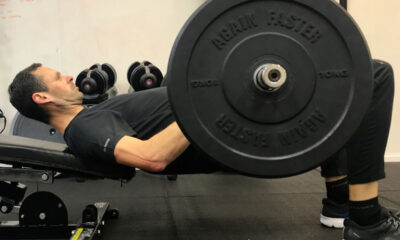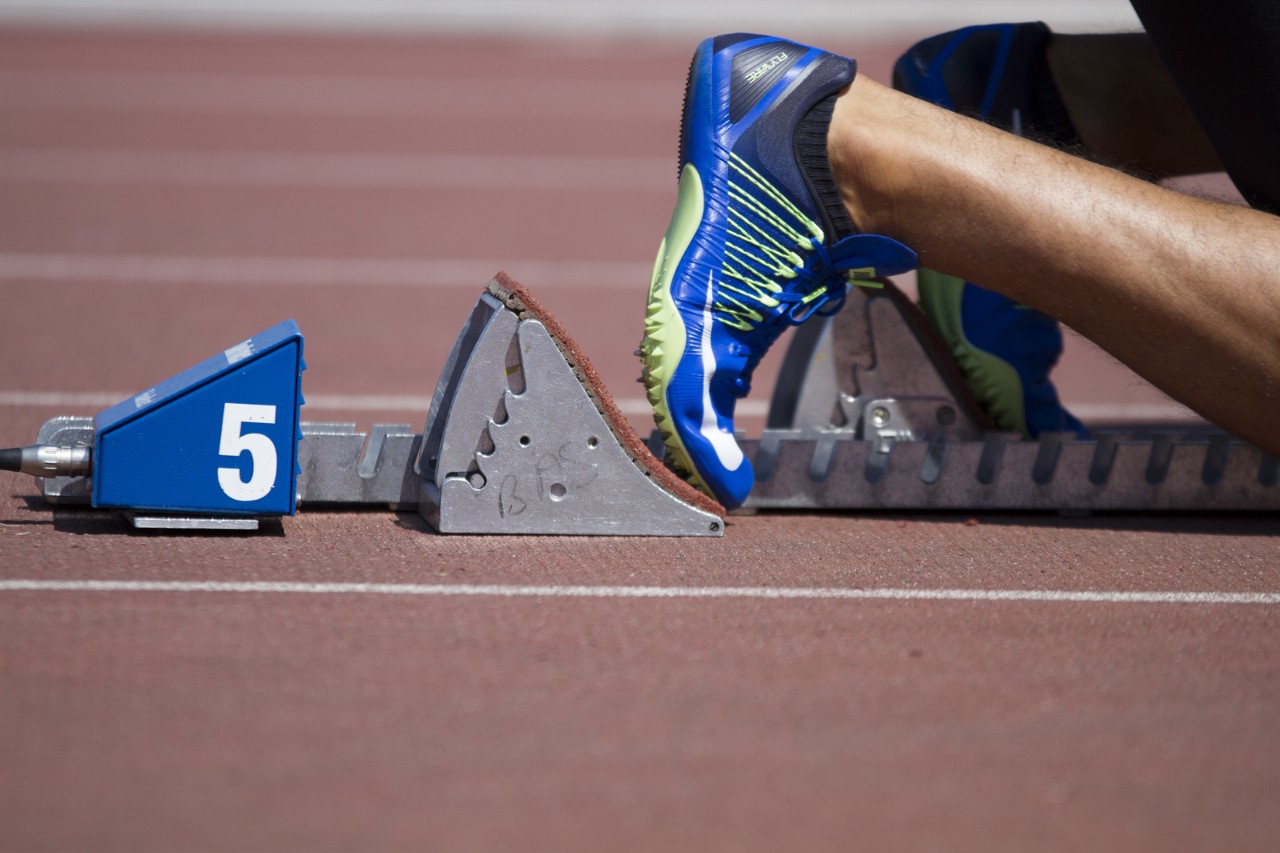
Have you ever heard of the butterfly effect? When a butterfly moves it wings in one location, it can cause a tornado in another location.
Or to put it another way, a micro change in one place, let’s say in the blocks at the start of a 100m race, can cause a macro change in another place, let’s say at the end of a 100m race.
It would appear to me that you can’t win your race from your block set-up, shape and clearance alone, but you can lose it.
And it also appears to me that we spend a lot of time refining acceleration and upright running. And of course we should. But if every step and posture in the 100m race is determined by what preceded it, the origin of that sequential reactive step by step process is obviously super important.
So here are my 6 tips for mastering the most difficult and important metre in the 100m race.
1. Master the parts before the practicing the whole.
I don’t know much about house building. But I know this. I wouldn’t start with the roof. I would probably build some good foundations. Then maybe some walls. Before I started with the roof.
You jump into blocks without doing any foundational work and, literally speaking, the roof will fall in.
The first metre involves a number of separate parts that come together. Master the parts before you try and stick the whole sequence together.
So before your first block session of the year be sure to have mastery of these key areas:
- Block and pedal spacings that are individualised around you.
- A consistent, suitable and balanced shape for the ‘on-your-marks’ and ‘set’ positions.
- Timing, direction and repeatability of your exit from the blocks.
Take away: Identify the day of your first block session. See that first block session as an endpoint of your learning progression of the parts. And the start-point of grooving the whole sequence.
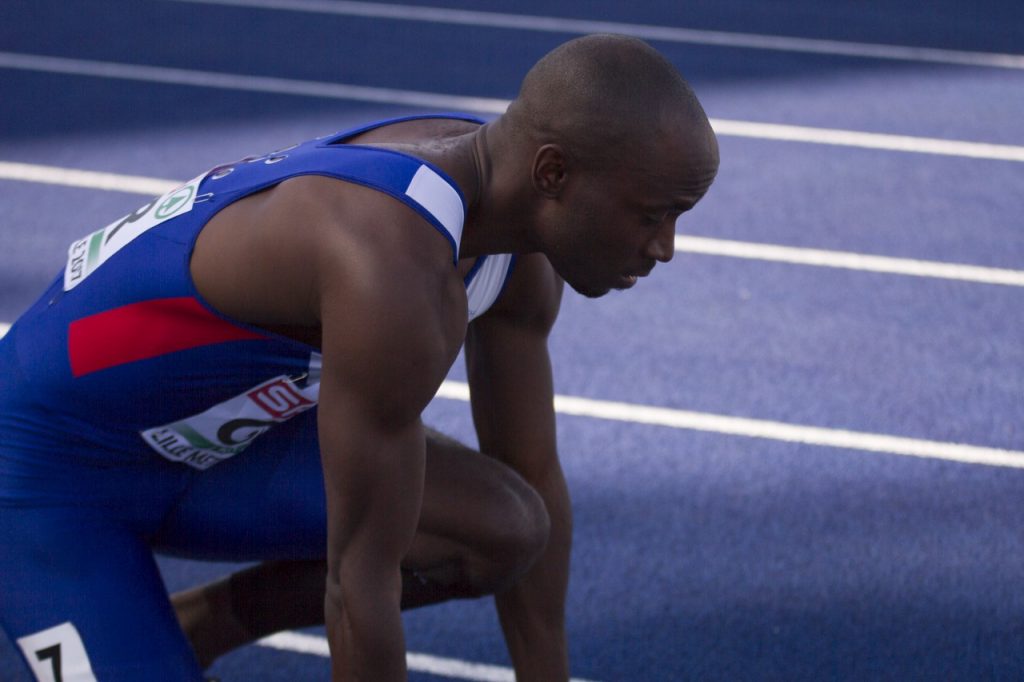
2. Teach and refine technique to allow full expression of power
Stand by a race track and watch a group of young developing athletes perform starts from the blocks. You are probably going to see the majority of those young athletes make it easier for themselves by shifting head, shoulders and chest upward to allow an easier exit pathway out of the blocks.
9 times out of 10 you will hear coach say ‘the athlete isn’t strong enough’. The solution always? Hit the weight room. Get stronger.
But here is the thing, most athletes who are reasonably good at 100m running are powerful people. They just aren’t placed in the correct position by their spacing’s and shapes to allow them to express the power they do have.
Every athlete is different. They have different lever lengths. Different joints. Muscle length, tendon sizes. Contraction systems etc etc.
The list goes on. So it would make sense that block spacings, pedals and positions have to be individualised.
Some people use leg lengths. Some people have intricate calculations for front and rear pedals. Choose a method the works for you and spend time refining spacing, pedals and positions.
Personally I like to do nothing more complicated than eyeball things and then use trial and error. It sounds simplistic but I work with an athlete for 5–6 weeks eyeballing their on-marks and set positions. I like the shape to look right. So I work hard with the spacings to get the shape to look right.
Take away: Athletes who run track are usually powerful people. Put them a position to express the power they do have. Don’t blame your athletes for not being strong enough because you can’t place them in the correct position.
3. Become a mono-tasker
The body can’t do two things at once. It can be searching for balance in set and reacting to the gun at the same time. The blocks are not for multi-tasking.
Craft and refine your set position so that your sensory network isn’t checking its surroundings to find balance as well as listening for the gun.
From October to December spend some time in your set positon. Learn to like it there. You should feel comfortable. Like you could hold set with a hurricane around you.
Take away: Do your balance work in the winter so when you sit in the blocks in the spring you are reacting to the gun and not trying to find your balance.
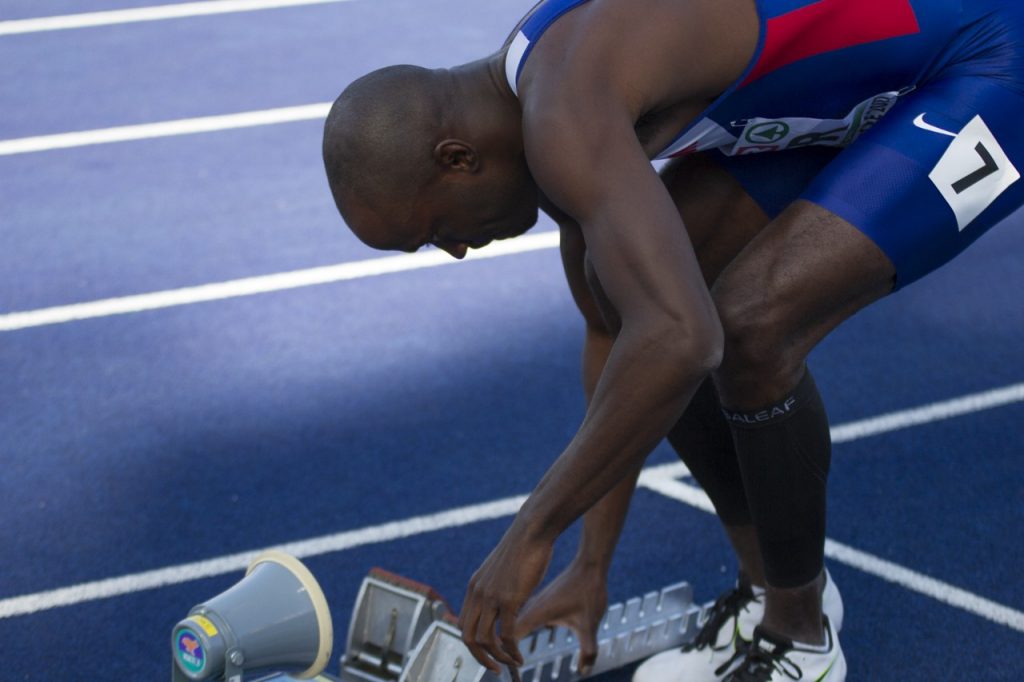
4. Perfect pressure to ensure an elastic exit
We have elastic energy that we can use. Stretch and release. Energy effcient would be an apt description. We have another type of energy we could use. This is muscle contraction. Energy un-efficient you could call it.
If you have to express your energy over the 100m race distance, which energy would you rather use to exit the blocks? The one that costs energy or the one that comes for free?
Saving your energy for the 45–50 forthcoming steps of power production would make logical sense, right?
So access your elastic system as much as possible to fuel your exit from the pocket.
To access this energy, you do have to a little work though. Your job is to press hard into the pedals to stretch your soft tissue like an elastic band. The pedals are there to be pushed into hard — so use them!
And watch for the subtle tension release just prior to the first movement. Sometimes forward. Sometimes down. Don’t stretch the catapult back and then release the tension just before you are going to fire!
Take away: An efficient elastic fuelled exit from the blocks is energy saving, giving you more money to spend up the race track.
5. Exit from the blocks forward with the right type of up.
Picture a jumbo jet at the start of a runway. Primed for take-off. The jumbo knows that if it tries to go up before it goes forward then it won’t take off. The jumbo goes forward and then eventually rises down the runway.
The 100m race is similar. You have to express your shape forward and then climb up in an incremental and patient fashion. Apply and feel pressure on each and every ground contact and let that force exchange on the ground dictate your step by step change in body angle.
So if smoothing and prolonging the upward gradient during the race is important, don’t start your race exiting the blocks steeply up.
Take away: A premature upward movement of your head and shoulders when leaving the blocks kills your race on the start line. Work hard to practice your transition from set with a healthy relationship between forward and up. This ensures a clearance angle that gives you a good chance of delaying your rise deeper into the race.
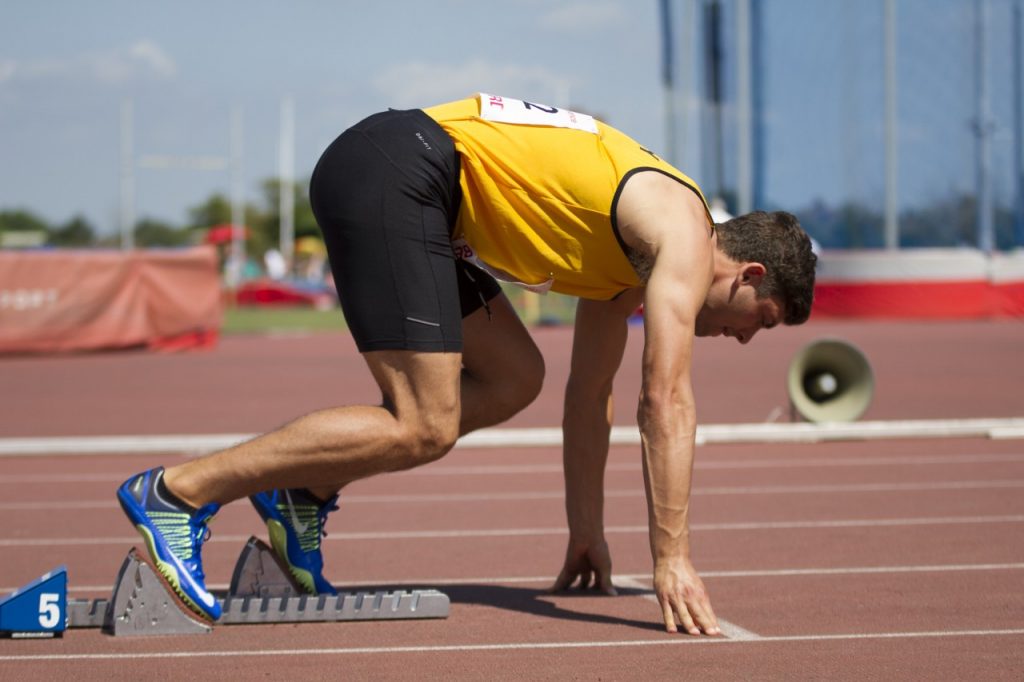
6. Groove your block exit angle in manageable settings
Block clearance is one of the hardest moves in all of sport. It requires timing as described above, power, co-ordination, reaction, among a whole host of other qualities.
You wouldn’t just walk into your local swimming baths. Climb the ladder to the 15m diving board and perform a back dive with 1 ½ somersaults, with 3 ½ twists. And expect to enter the water with a ruler like posture with minimum water splash. You will most likely belly flop, badly. Water everywhere. Embarrassing yourself completely as you exit the pool with a red mark across your stinging torso, scratching your head wondering why you didn’t nail the final twist properly.
A more sensible strategy might be to start diving from the poolside perfecting your dive from that height. Then the 5m board. Then the 10m. Then eventually the 15m board.
Start from a position that has the lowest possible block exit difficulty, say a falling start on a hill. Learn how to exit the set position forward with the right amount of up. Then move to a more challenging positon, say a 3-point start. Maybe transition to a 1-pedal start. Then finally transition to blocks. Doesn’t haven’t to be that sequence. But it does have to be well thought out progressive learning syllabus.
Take away: Jump too early to a block clearance situation you haven’t prepped for and your body will workaround the problem by choosing an easier block exit strategy. Perfect your skills in manageable environments that allow you to learn how to clear the blocks and win your race from your first step.
Steve Fudge is a professional Sprint Coach for British Athletics. He coaches elite sprinters, mentors sport coaches and provides consultancy services to professional sport people and staff. You can contact Steve on Twitter or on his website.
















